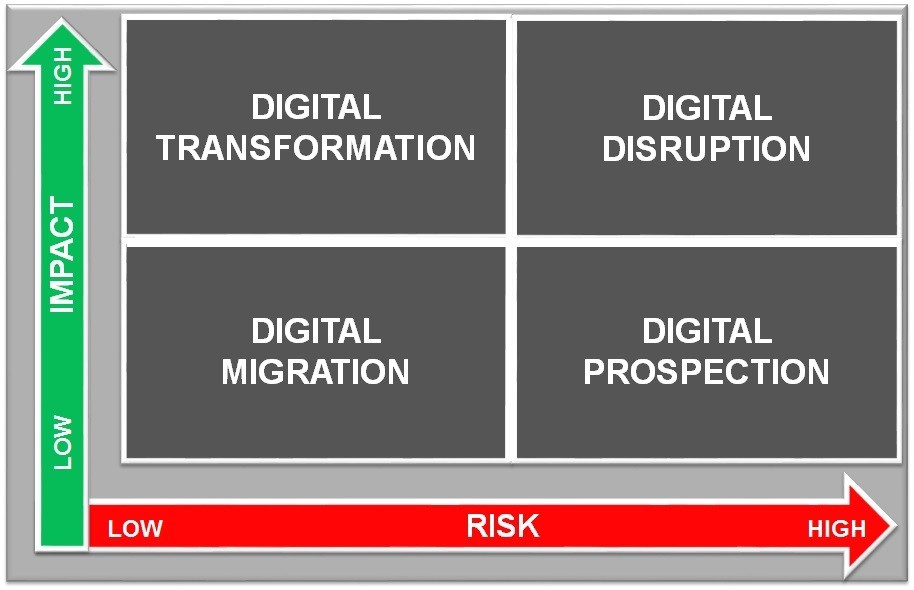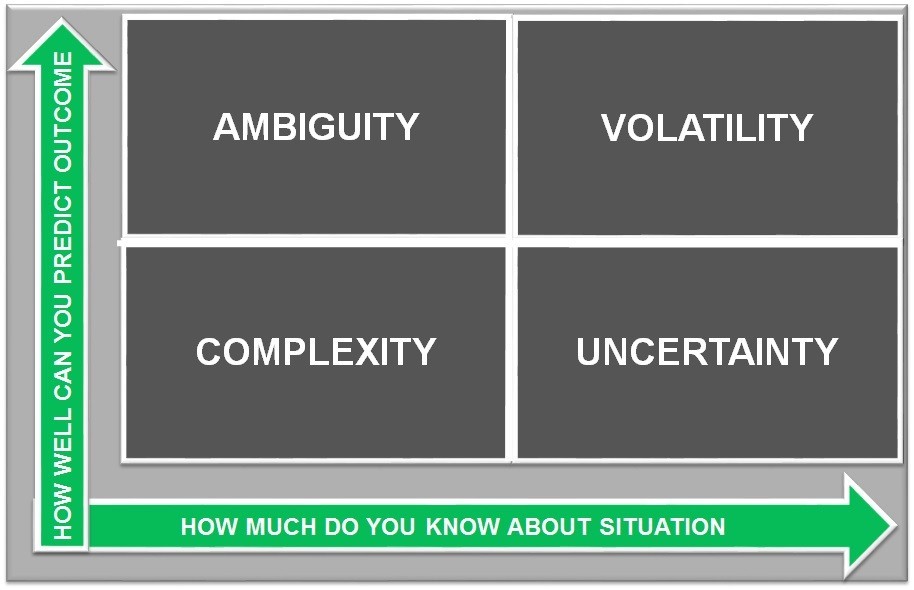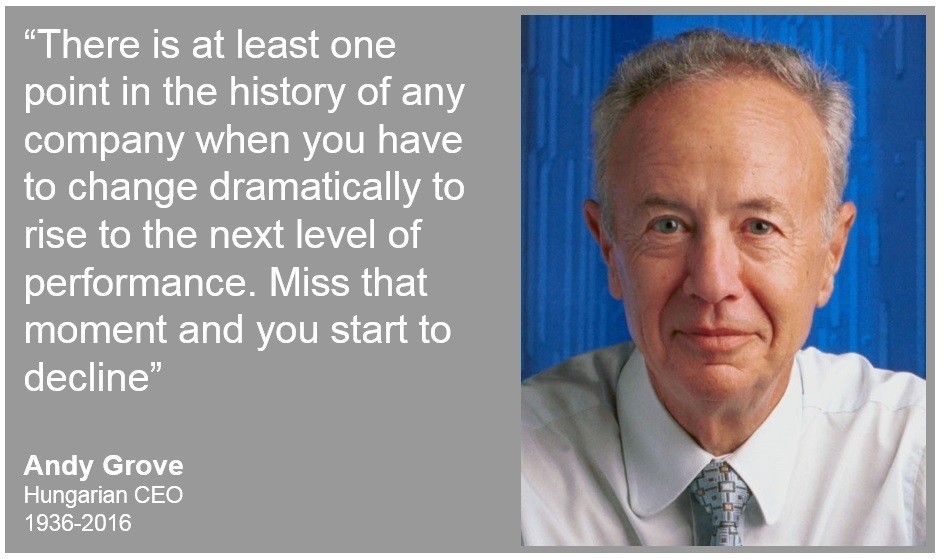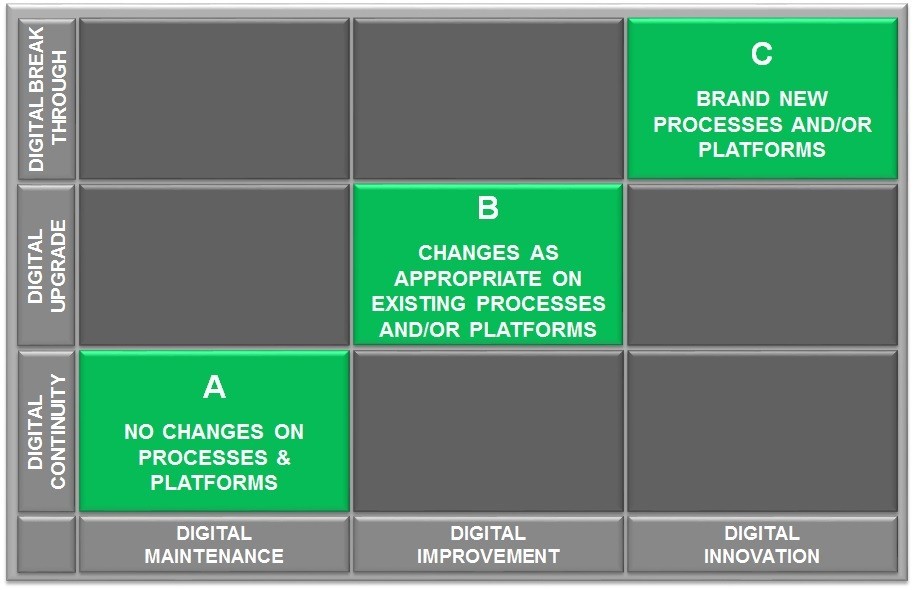Information Technologies activities, consuming in different quota both operational (OPEX) and capital investments (CAPEX), may easily account for financial needs up to several percentage points of Corporates turnover [1]. These figures are probably going to further increase, the more the mantra of Industry 4.0 – and following releases – resounds. This is huge money and, in case of failures of relevant initiatives, their impact on Corporates bottom lines may cause major embarrassment and organizational consequences [2][3].
Analysis and experiences reported by qualified sources – e.g. McKinsey & Company [Perspective on transformation, August 5th, 2019] – and studies carried out by outstanding institutions – e.g. CISQ [4] – provide quantified elements for suggesting a prudent approach.
In fact, there is an estimate that about 70% of digital transformation undertaking fails, whereas the cost of poor-quality software (and related programs/projects) is globally measured in billions USD.
In a recent article [5], we proposed our view about what can happen to Corporate IT initiatives, depending on the appropriateness of their underlying strategies and the quality of their executions.
In order to broaden the perspective, we will examine hereby what can be done upfront, much earlier than going into project phase, before assigning budgets to Corporate IT scopes, to weight and balance risks against return.
We will review briefly how and why money should be assigned, and what strategies can be considered for minimizing risks while keeping in motion the Corporate in the right direction at the proper speed.
Where the money goes
In this context, for simplicity, we will use “digitalized enablers” to refer to the combination of both processes and supporting technological platforms.
However, our recommendation is to ALWAYS distinguish explicitly between processes and platforms, as their reciprocal optimal fit (and digital marriage) – which is performed through the given digitalized enabler – is everything but granted.
In our view, whatever is spent on digitalized enablers goes in three main streams, which are all contributing in variable portions to sum up to 100% of total OPEX and CAPEX expenditures in IT.
These buckets are visualized in the below matrix:
Daniele Rizzo © 2019
In short, we recommend that to properly assign budgets, IT strategies of Corporates should be able to define own objectives and breakdown/name all activities, by labelling each of them with A, B or C, as applicable in accordance to the definitions that are set in the following.
As simple as A-B-C
Starting with the simplest category, Type A is expected to be prevalently OPEX (especially when there is maximized outsourcing of hardware and other items, that in the past were managed as CAPEX).
Type A pertains to the expenditures required to keep running operations, exactly as they are, from a given year to the next year.
Self-complacent strategies would put all the money in Type A, assuming that IT needs for years to come are only devoted to renewal of contracts, without significant investments in new infrastructures, processes and software (A=100%, B=0%, C=0% of total CAPEX/ OPEX).
Real and less myopic Corporates, in addition to considering how to keep running the status quo, will also consider what to do for getting – from IT expenses – enhanced enablers for running a business in a better, more performant and profitable fashion.
This means conceiving and developing new processes and/or running the same processes on more performant platforms.
This expectation is fulfilled in the scope of IT initiatives positioned into Type B and Type C categories, whose relative weight depends on Corporates strategies, and whose extent reduces Type A to a figure less than 100%.
In our view, there is not an ideal mix A+B+C initiatives, for this depends on which markets these Corporates operate, and – for a given Corporate – on relevant specific boundary conditions and financial availabilities.
While the definition of Type A is quite general, it is important to stress that boundaries between Type B and Type C can significantly change, depending on Corporates and their innovation cultures.
For instance, if Corporate X introduces an unprecedented process for managing business leads and opportunities, which is globally supported by a CRM platform (common to all own operations), we may certainly state that this goes under Type C (if prior to such decision there was nothing comparable in use across the whole organization).
In fact, we may state that both brand-new processes and platforms are implemented, hence we have a case in perfect fit with Type C definition.
On the other hand, very often, it is hard to really find any initiative starting from a complete “green field” context, thus each Corporate has to define for itself the border between Type B and Type C.
If we refer again to CRM example, this time for a given Corporate Y, what is Type C – in certain portions of such Corporate – can be Type B in other portions of the organization, which were earlier engaged to pilot the introduction of the new platform/process.
In fact, these possible early-bird organizational units of Corporate Y will only experience appropriate “changes” instead of brand-new processes or technologies.
In the scope of this article, we will concentrate exclusively on Type C, where true innovation happens (according to our definition). Thus, we will consider situations when there is a significant discontinuity, either on processes or platforms or even for both components of the digital enablers.
Key categories for digital innovation
Innovation is driven by expectations of return, and it is naturally associated with risk, hence the flip side of successful innovation is a failed initiative with consequent direct and indirect costs.
While the concept of risk is “genetically” programmed also in ordinary people, the meaning of term “impact”, in the following, must be clarified as it can have both positive and negative implications.
In fact, we will map IT Corporate initiatives in accordance with their potential risk and associated impact, which may turn in losses if developments and deployments do not land where expected [5].
For simplicity, four quadrants will segment the landscape as a consequence of high/low scenarios:

Daniele Rizzo © 2019
In our view, a healthy IT Corporate portfolio of initiatives and activities should be wisely populated in almost all quadrants, possibly excluding Digital Disruption, as it will be explained in following paragraphs.
Digital Transformation
Starting with the most attractive scenario, Digital Transformation is where ideally digital innovation should stay, because here we have Low Risk/High Impact.
Low risk means that objectives, resources, boundary conditions and timing are all under control and affordable/achievable by concerned Corporates.
This especially means that the “window of opportunity” is clearly identified and the transformation teams are prepared to run the undertaking within given time slots.
High impact means that Corporate will reposition – thanks to this digital transformation – where it has to be to successfully compete in own market of reference.
New processes and/or platforms will be deployed and established smoothly and effectively, on cost, on quality and on time.
For instance, the IT initiative for the given Corporate may be aimed to create and deliver new streamlined processes on a fully integrated seamless business platform, which will enable end-to-end activities from opportunities management, through tendering, until to order-entry.
In theory, such an achievement, implemented in place of fragmented practices, scattered across multiple disconnected platforms, would eliminate non-value-added actions and increase speed and quality in supported transactions (not to mention the cost savings, which arise from the retirement of obsolete legacy applications).
Even in this most favourable scenario it is due to underline that risk is low but not zero!
Especially during the retirement of legacies, unpleasant discoveries and challenges may be found along the way [6].
This is why, in spite of their negligible probability, circumstances may happen that turn (potentially) successful transformations into failures.
While legacies are “internal” issues, we can also imagine, for instance, “external” threats generated from an unexpected hostile take-over launched from a competitor.
This may force the Corporate, in transformation, to counter the attack with all available resources, imposing a different strategy and/or freeze/change of original plans.
In case the competitor succeeds with take-over, this may even result in obliged alignment with new strategies (set by new management and owners). In fact, it is very unlikely that old and new strategies will be found perfectly aligned after a take-over (or M&A).
Digital Migration
The quadrant Low Risk/Low Impact refers to initiatives associated to very minor changes in processes, and/or almost unnoticed platform modifications (from users’ standpoint).
This combination creates incremental benefits for the concerned Corporate, compared to status-quo-ante, while implying a low risk of failure.
In this quadrant, it is worth noting that normally the platform innovation happens almost in the background, while the component of change related to processes may be more difficult to handle, as it requires adequate skills for organizational change management, not always in place.
Digital Migration normally delivers value, sometimes very significant, in a painless way.
For instance, it may be a migration to the cloud of databases and directories or a substitution of email and calendar platforms.
In both such examples, users may get quickly acquainted with new processes, normally with a prompt appreciation of better performances and limited complaints from the “usual suspects”.
The risk in such initiatives is normally negligible because even in case of roll-back, for whatever reason, this should be normally straightforward, whenever necessary.
Digital Prospection
When innovation of processes and/or platforms is featured with high-risk profile, but it can be as well managed comfortably with due advance, it makes sense to try it in “controlled” right-sized contexts and “segregated” environments.
Because of high-risk, Digital Prospection is such only if it can be modularized and made scalable up to the right dimension and extent.
For instance, this circumstance can happen when a new supplier of technologies or services becomes a prospect to be taken aboard, and/or requirements for new business processes emerge in their inception phase, before being a critical necessity.
To stay in the quadrant of Digital Prospection, the combination of above factors must result in low impact (due to the limited scale of the initiative), with the aim to minimize drawbacks whenever situation turns bad.
For instance, if in a Corporate all configurators are built on a given platform, and Corporate wants to add a little spice to the relationship with the relevant historical supplier, it may make sense to engage another supplier to develop a trial and see if more and better can be obtained.
In fact, it would be too careless to force a large-scale switch from the old business partner to the new unknown/unexperienced provider.
Hence Digital Prospection can be the kind of exploration, which is undoubtedly convenient for shaking everybody from within own comfort zone, without jeopardizing running and established operations in other portions of the organization.
In fact, a well-managed Corporate should systematically run an appropriate number of digital prospection initiatives.
This systematic approach would allow coping with VUCA scenarios, which are nowadays a permanent element of economic and technological landscape:

In our view, actually, this quadrant should always be the point of origin from which any Corporate IT initiative should start own journey.
From the playground of Digital Prospection, Corporates should learn how to assess initiatives and move them later to either any of the remaining quadrants, or directly down in the sink in case of failure.
Digital Disruption
Initiatives with High Risk/High Impact profile should never be started unless forced by unplannable circumstances.
However, when this applies, because this occasionally may be the case, the only possible actions for mitigating the risks is to prepare a Plan B and to allocate provisions, as appropriate, to avoid sinking the whole Corporate in the worst cases.
It must be clear that facing the obligation of Digital Disruption is not necessarily due to distracting management or sheer incompetence.
Sometimes it just happens because of events out of any reasonable expectation of control.
We recommend considering the words that Andy Grove dramatically pronounced during a key-note speech [7], by offering the concept of “strategic inflection point”, whose concept is summarized in the following quote:

Corporates should apply any effort and appropriate functional set up to have the chance to anticipate an upcoming “strategic inflection point”, because this must be adequately considered, and the whole Corporate must prepare for it, and possibly organize for a Digital Transformation, before being forced to a Digital Disruption.
Closing eyes and waiting for crash landing should never be the only option on the table.
Reality check
Maybe unexpectedly to many, in our view, the most critical challenge with Corporate IT initiatives may be the gap of alignment between users – both internal and external to Corporates – and the management in charge of directing the initiatives.
This range of misunderstandings may lead to conceive unrealistic visions, out of which solutions are developed and deployed, in spite of their apparent unfitness to purpose (if purpose is to serve own users/customers by means of excellent processes and platforms).
Unfortunately, behind and beyond official declarations, strategies and visions, there are sometimes less noble purposes (which may run in the background), some intentionally set, some which simply result from the inability of certain organizations to see themselves in the mirror as they really are.
While we disregard the first circumstance (as it leads to compliance considerations, that we do not encompass in our article, whose aim is to present “best practices”), we may refer to Adam Smith, who framed the second circumstance very nicely in his following quote:

Such warning may be mentioned more frequently than expected, as it may be fueled by consultants and more professionals, which are outsiders to the Corporates and cannot know enough where IT initiatives are going to be launched, which is their background, and which are the real needs and capabilities [8].
Unfortunately, also Ayn Rand is very right:

In fact, without adequate KPIs in use, it may be difficult to get a grip on what is really happening, and Corporate IT initiatives may run too far to be economically re-directed or – worst case – retired in case they prove to completely miss their objectives.
Conclusions
This article was triggered by a very valuable comment received a few days ago from the CIO of a major Italian Corporate.
Such input led to the creation of the Risk/Impact Matrix and the positioning on it of the case for “Digital Prospection”.
This was followed by “Digital Migration” and completed with “Digital Transformation” and “Digital Disruption”.
All of them were conceptualized for the purpose of the matrix; precisely, it was a “premiere” for the initial two, while the latter two were already analyzed in a prior article [5].
However, it was necessary to find – by chance – the following quote – by Judea Pearl – in order to understand what urged the effort to write this article:

In fact, the more we speculate on Corporate IT initiatives, the more we see applicability of above statement.
Of course, the humble exercise carried out so far wants to be – at the same time – just provocation and an attempt for clarity.
Readers are all invited to offer their views and be engaged for making Corporate IT initiatives a better place (which absorbs trillion dollars every year).
References
[1] “What is the cost of Information Technology done right?”, Roman Stanek, Forbes Technology Council, November 11th, 2017;
[2] “Lidl cancels SAP introduction having sunk €500 million into it”, 13.08.18, Consultancy.uk, August 13th, 2018;
[3] “Lidl software disaster another example of Germany’s digital failure”, Florian Kolf, Christian Kerkmann, Handelsblatt, July 30th, 2018;
[4] “The cost of poor-quality software in the US: A 2018 Report”, Herb Krasner, CISQ, September 26th, 2018;
[5] “Corporate IT programs: Four cardinal landing scenarios”, Daniele Rizzo, LinkedIn, August 20th, 2019;
[6] “Why decommissioning IS legacy platforms in corporate environments is generally slow and hard”, Daniele Rizzo, LinkedIn, October 3rd, 2017;
[7] “Strategic inflection point: Concept and examples”, Andy S. Grove, Academy of Management, Annual Meeting, San Diego CA (USA), August 9th, 1998;
[8] “Three dark facts that your IT consultant would never disclose”, Daniele Rizzo, July 10th, 2015.
Article by channel:
Everything you need to know about Digital Transformation
The best articles, news and events direct to your inbox
Read more articles tagged: Featured, Innovation










